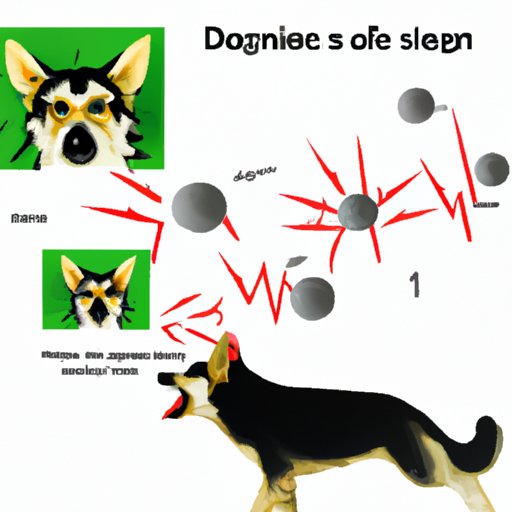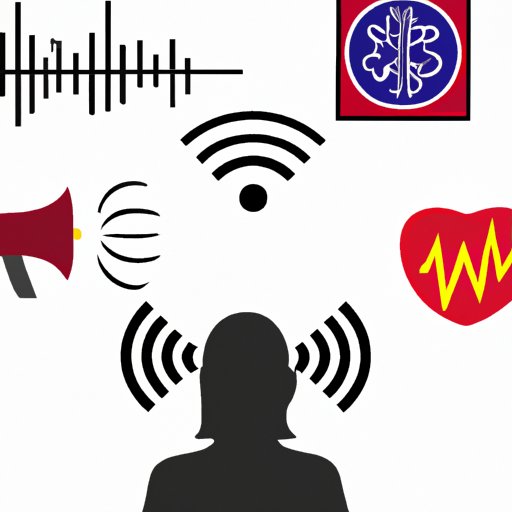Introduction
Sound is a form of energy that is created by vibrations that travel in waves. Sound waves are made up of areas of high pressure and low pressure, which are called compressions and rarefactions respectively. These compressions and rarefactions move outward in all directions until they reach something that absorbs or reflects them. This process is known as wave propagation.
Sound Travel in Different Mediums
The speed of sound depends on the medium it is traveling through. Different mediums have different properties, which can affect the speed and direction of sound waves. Let’s take a look at how sound travels through air, water, and solids.
Air
Sound moves through air at about 343 meters per second, or about 1235 kilometers per hour. This speed can be affected by temperature, humidity, and other environmental factors. For example, warmer air is less dense than cooler air, so sound travels faster in warmer air. Similarly, humid air is denser than dry air, so sound travels slower in humid air.
Water
Sound moves through water much faster than it moves through air, travelling at about 1480 meters per second, or about 5300 kilometers per hour. This speed can also be affected by temperature and pressure, as well as other environmental factors. For example, sound travels faster in warmer water and slower in colder water. Similarly, sound travels faster in deep water and slower in shallow water.
Solids
Sound moves through solids much faster than it does through air and water, travelling at about 5000 meters per second, or about 18000 kilometers per hour. This speed can be affected by the composition of the material, as well as other environmental factors. For example, sound travels faster in denser materials like steel and slower in less dense materials like wood. Similarly, sound travels faster in hard surfaces and slower in soft surfaces.
Uses of Sound
Sound has many practical uses, from communication to entertainment. Let’s take a look at some of the ways sound is used.
Communication
Animals and humans use sound to communicate with each other. Animals use vocalizations, such as calls and songs, to attract mates and warn off predators. Similarly, humans use language to communicate with each other. In addition, sound can be used as a form of entertainment, such as music and spoken word performances.
Navigation
Sound can be used to navigate underwater. Submarines and other underwater vessels use sonar (SOund Navigation And Ranging) to detect objects or obstacles. Sonar works by sending out sound waves and measuring the time it takes for them to bounce back. This information can then be used to determine the distance and location of the object or obstacle.
Entertainment
Sound is used in many forms of entertainment, such as music, movies, and gaming. Music uses sound to create rhythm, harmony, and emotion. Movies use sound to create atmosphere, tension, and excitement. Gaming uses sound to create an immersive experience for the player.

Impact of Sound on Animals and Humans
In addition to its practical uses, sound can also have an impact on animals and humans. Let’s take a look at some of the physical and psychological effects of sound.
Physical Effects
Sound can have positive and negative effects on health. According to a study published in Frontiers in Psychology, “Sound has been shown to reduce stress, improve cognitive performance, enhance immune system functioning, and even promote healing”. On the other hand, exposure to loud noise can lead to hearing damage, increased heart rate, and increased blood pressure.
Psychological Effects
Sound can also have an impact on behavior and emotions. According to a study published in Frontiers in Neuroscience, “Exposure to sound has been shown to have significant effects on the brain, including changes in neural activity, attention, learning, and memory”. In addition, exposure to sound can also have an effect on mood and behavior, such as increased aggression and anxiety.
Conclusion
This article explored the physics of sound waves and how they travel through different mediums, such as air, water, and solids. It also examined the various uses of sound, from communication to entertainment, and its impact on animals and humans, both physically and psychologically. Further research into the effects of sound on health and behavior is needed to better understand its potential benefits and risks.
(Note: Is this article not meeting your expectations? Do you have knowledge or insights to share? Unlock new opportunities and expand your reach by joining our authors team. Click Registration to join us and share your expertise with our readers.)
